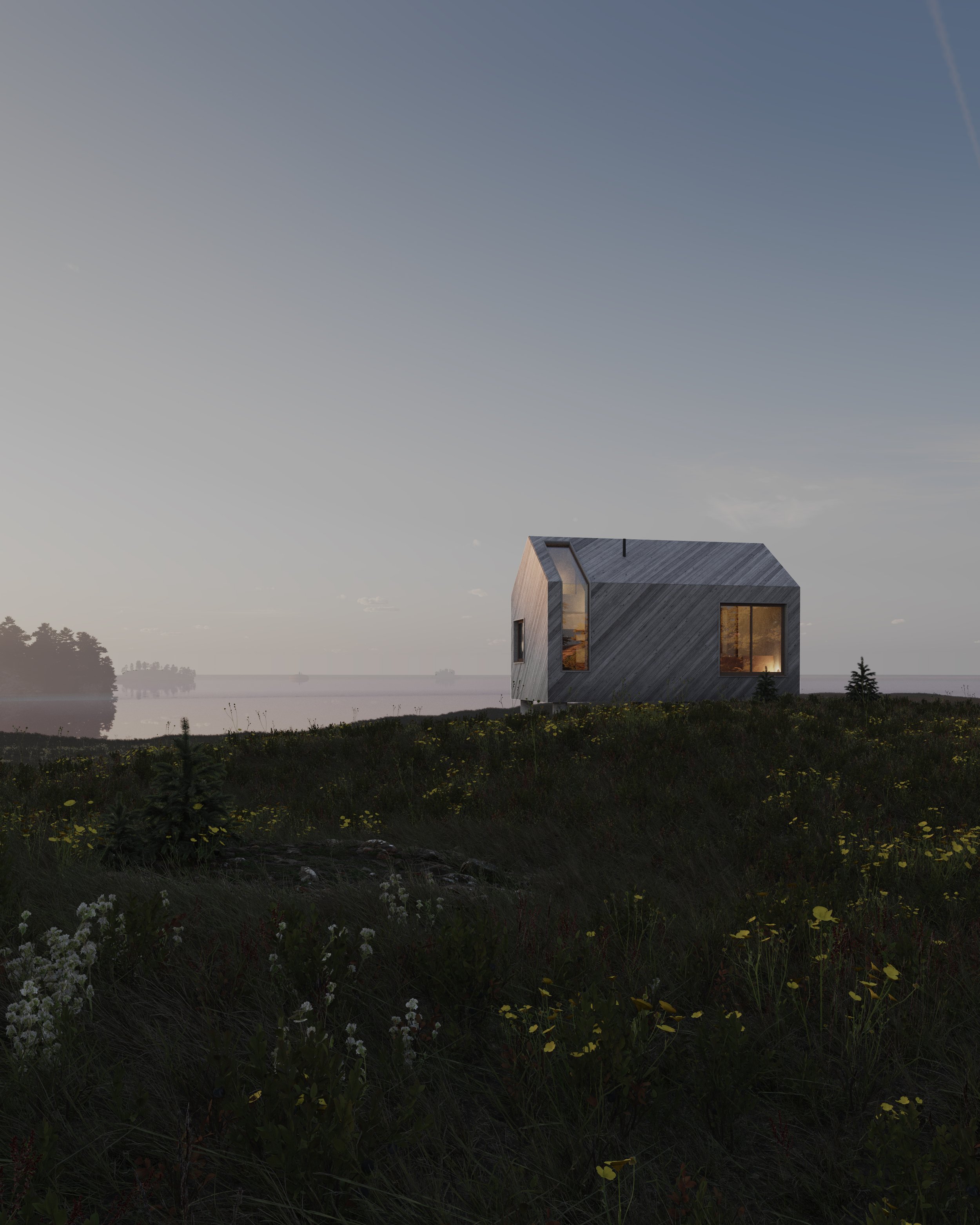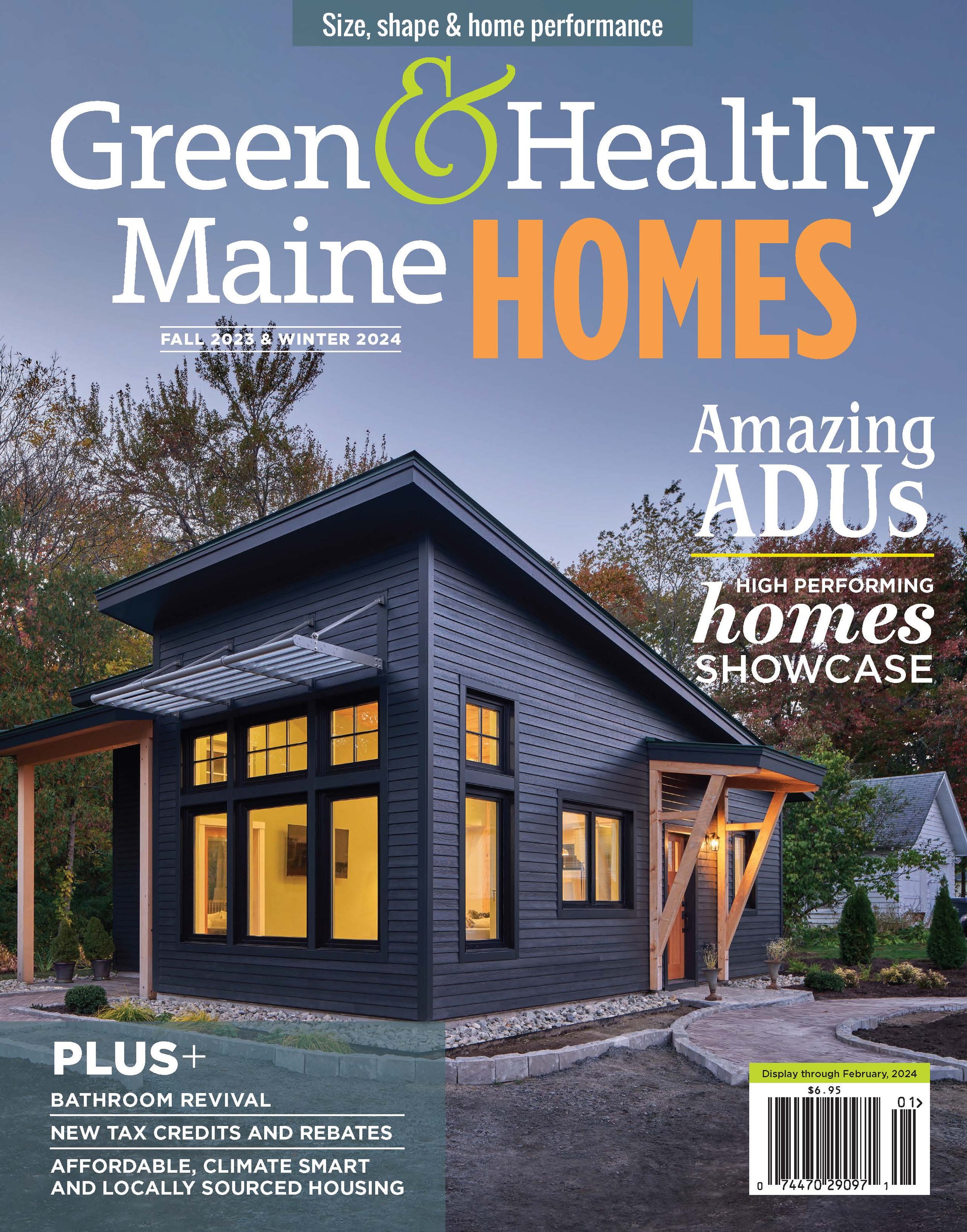Amazing ADUs: High-performance prefab small homes
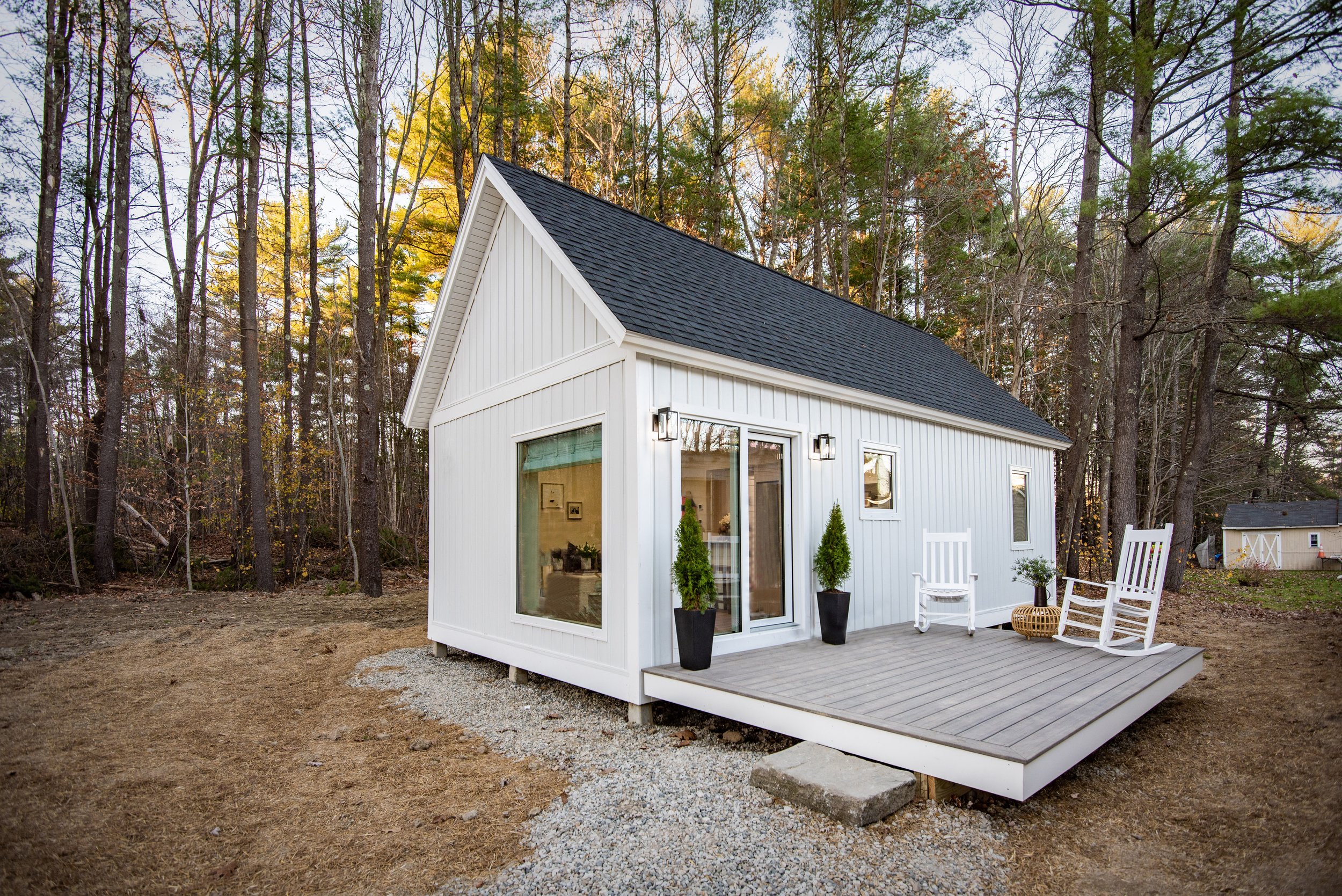
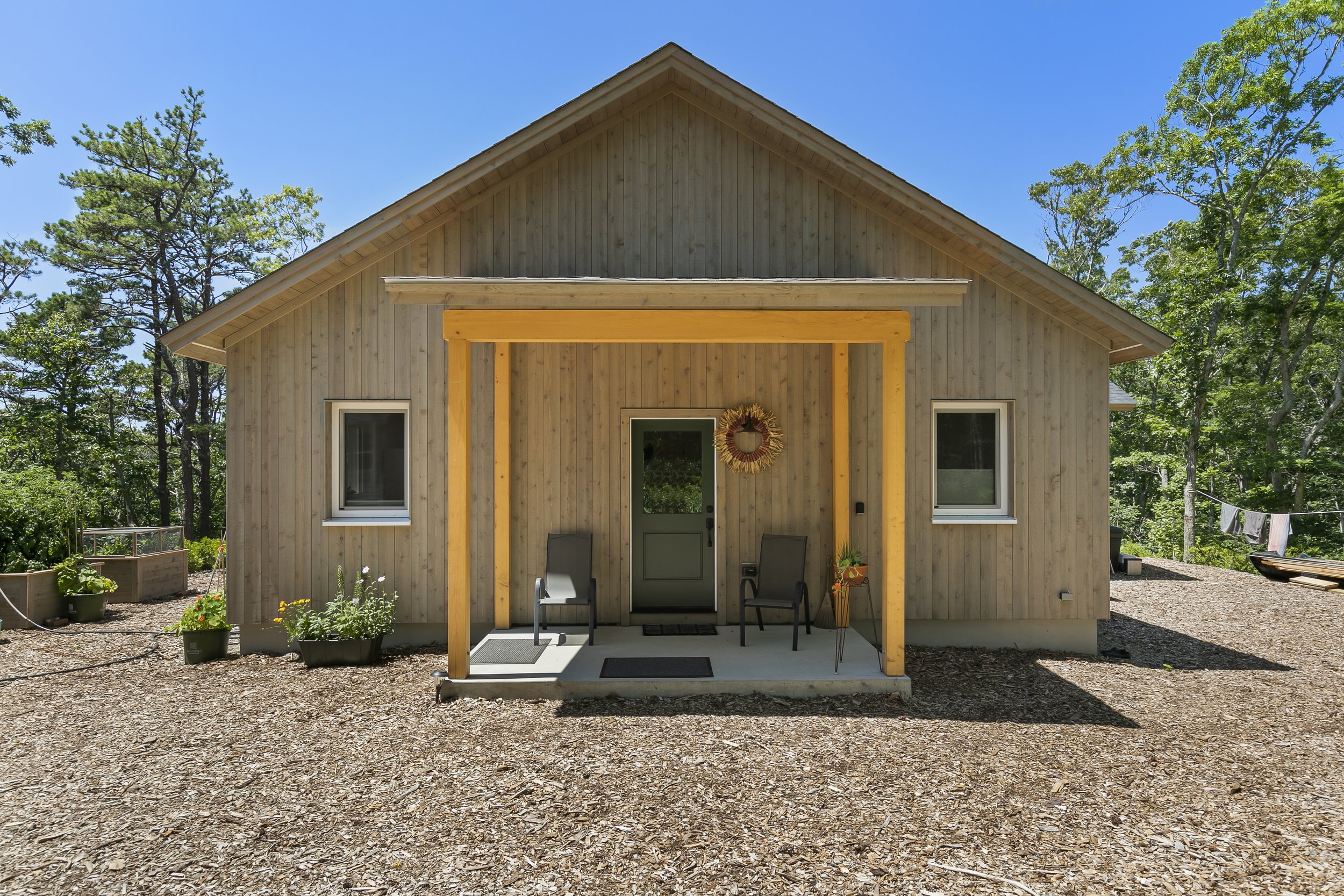
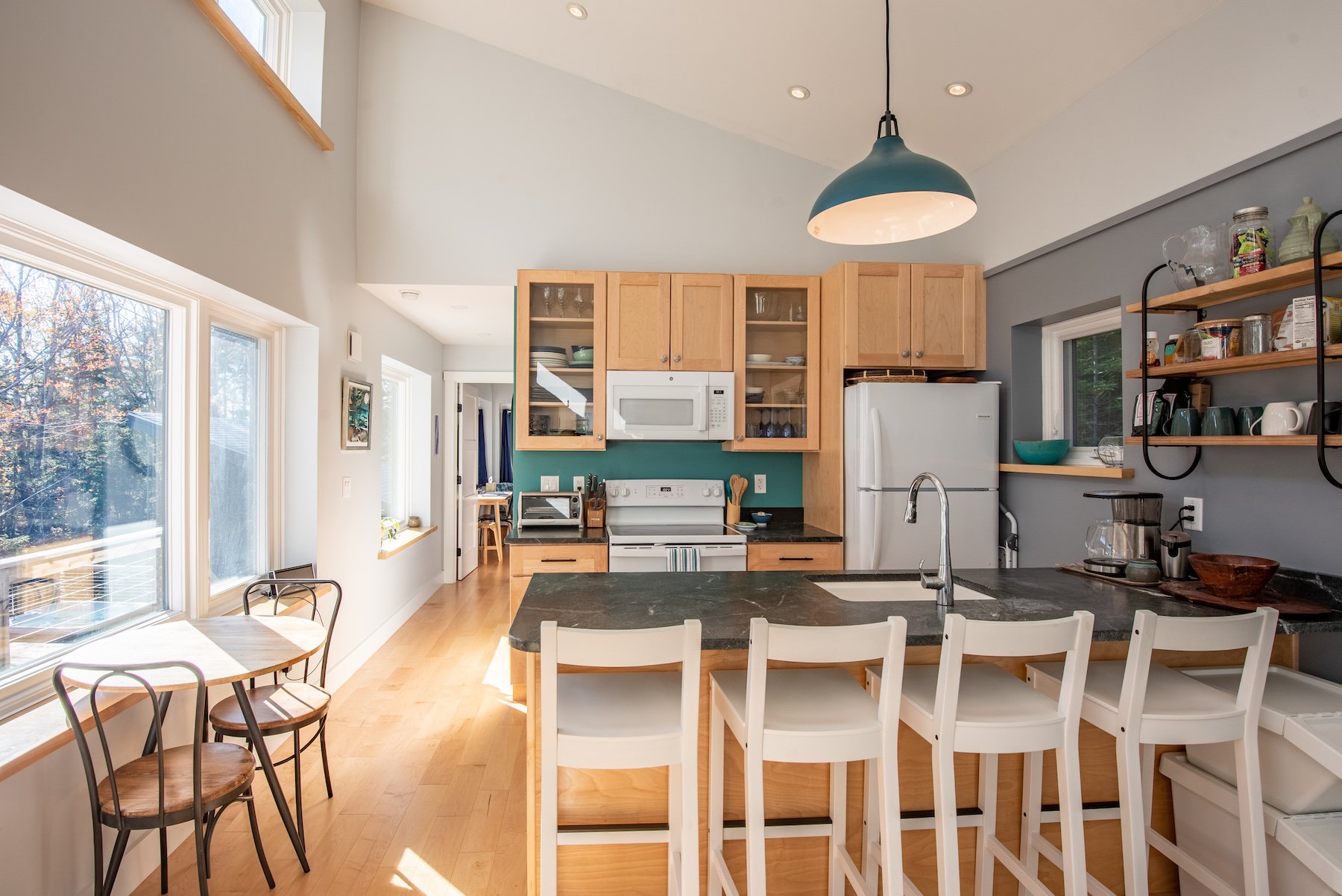
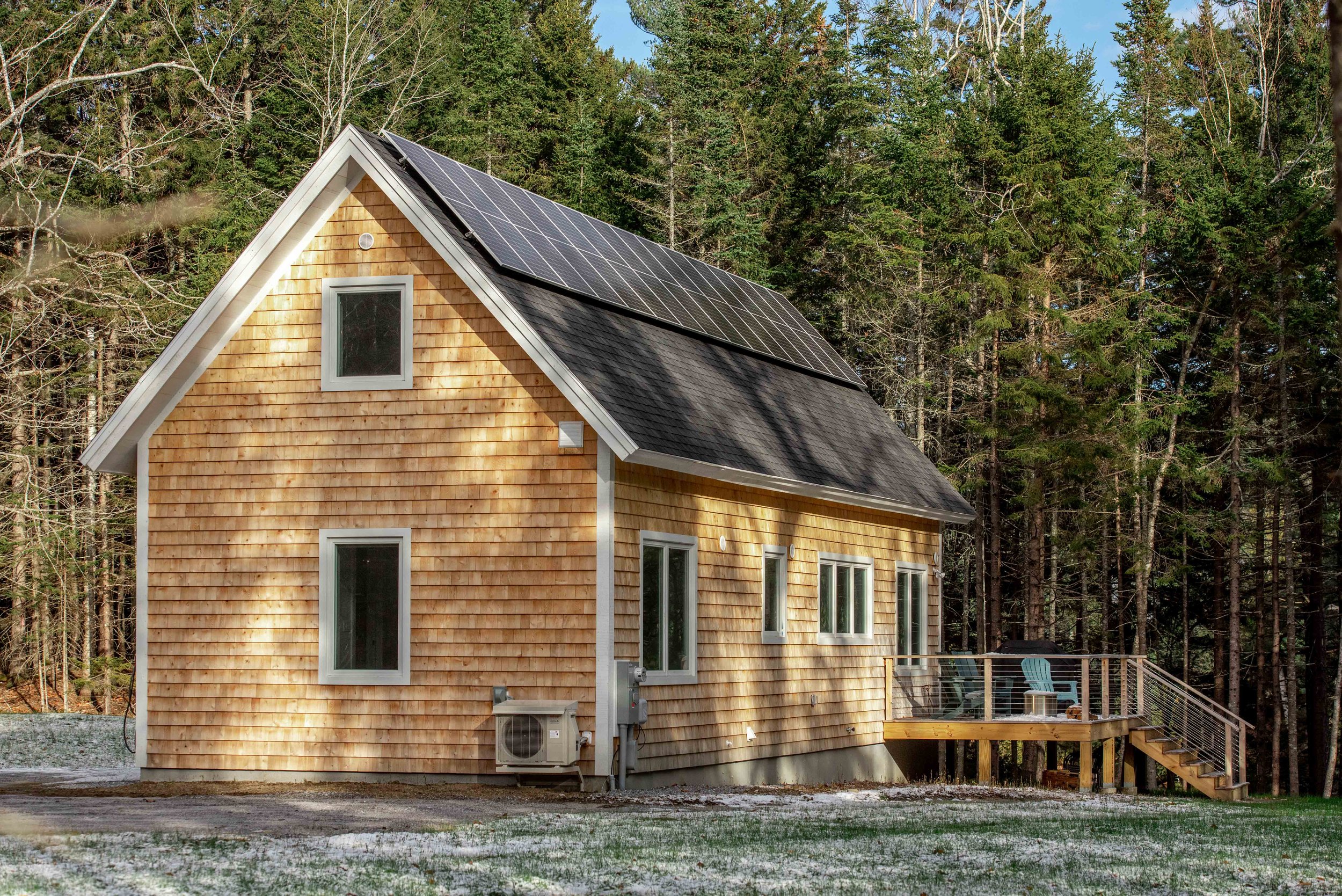
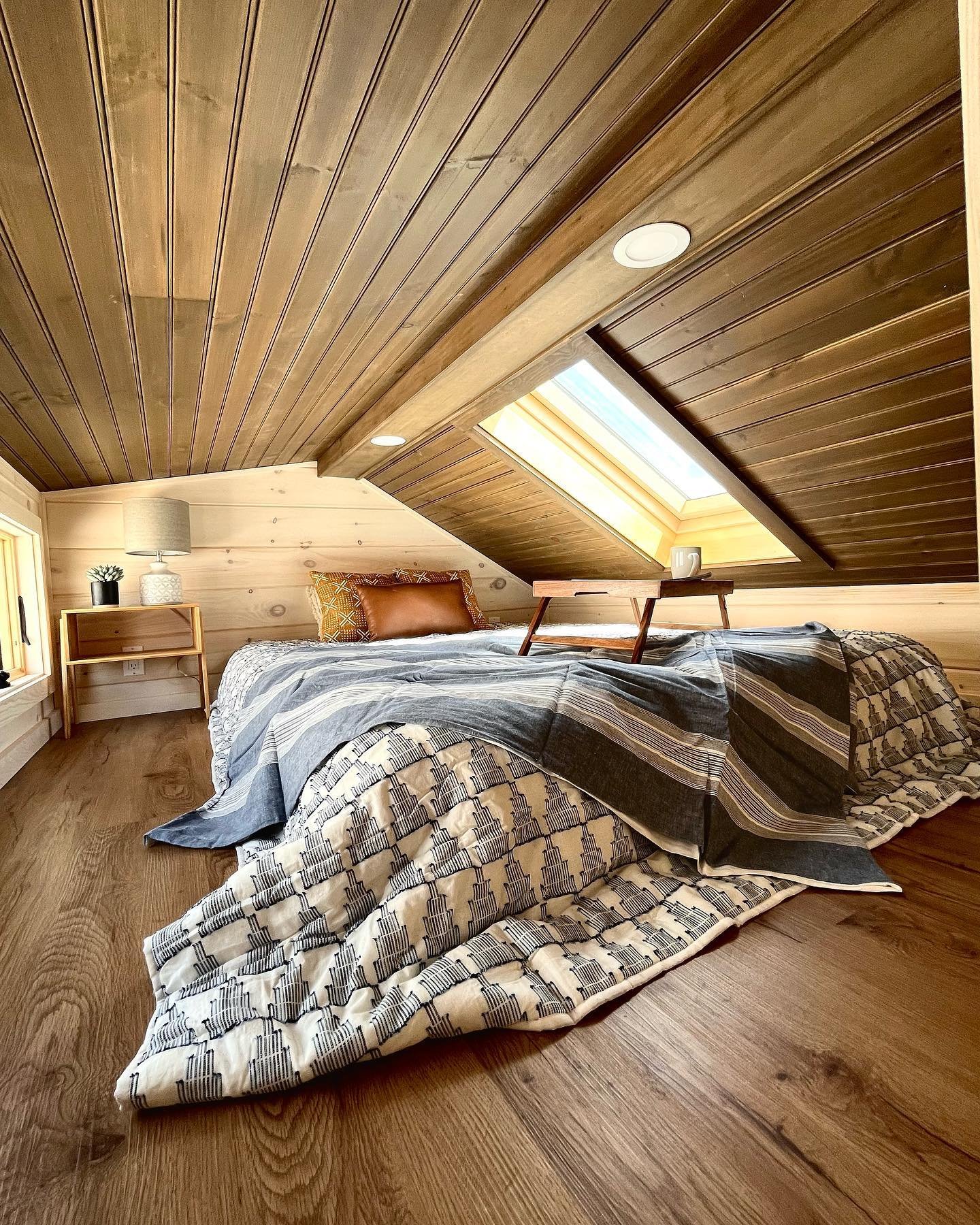

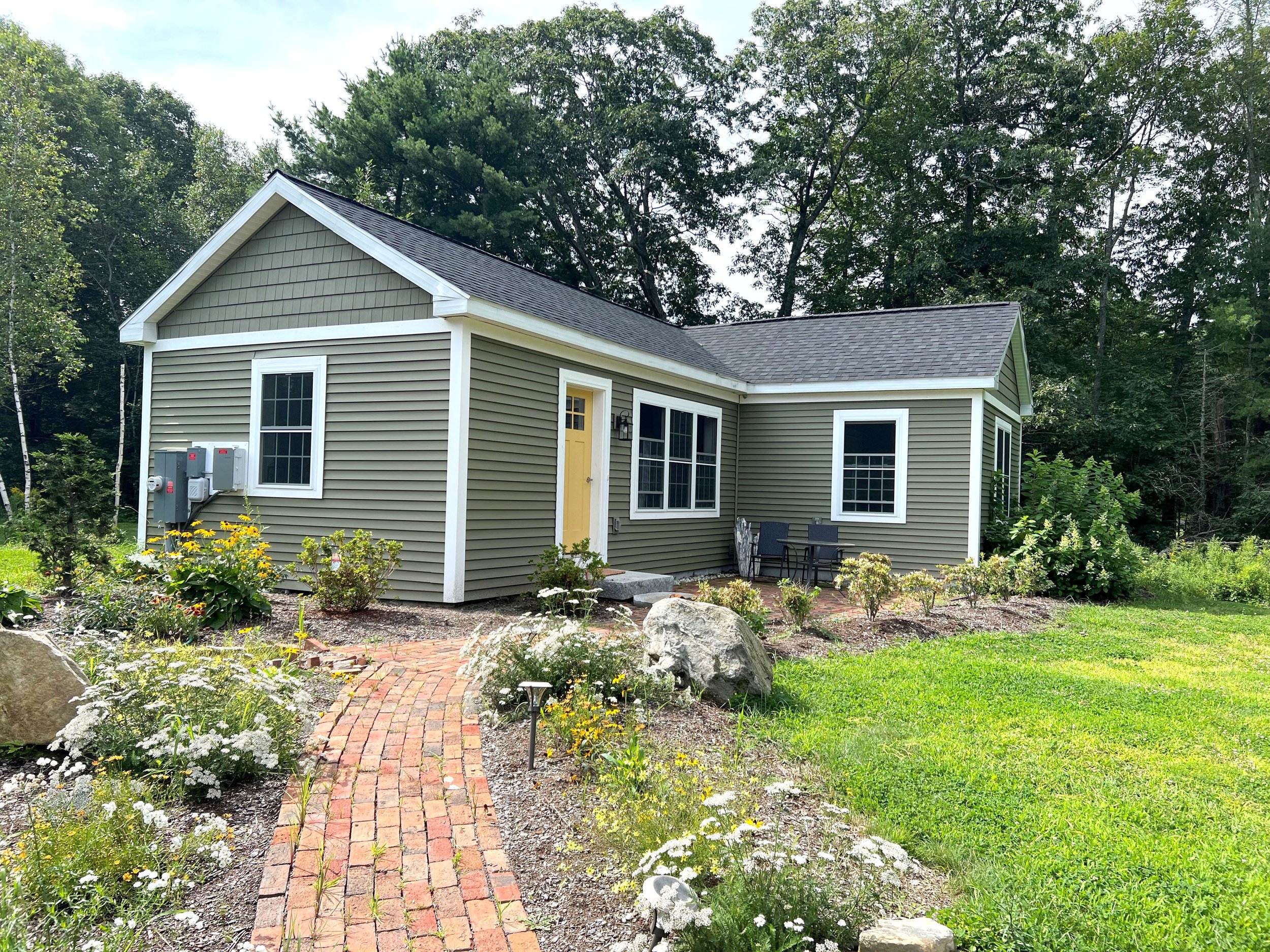
By June Donenfeld
A YOUNG COUPLE IN SEARCH OF AN AFFORDABLE, durable first home with a small carbon footprint. An older homeowner who wants to age in place in the future while earning extra retirement income now. A family who wants more space for their revolving cast of house guests—and privacy for themselves. What do these people all have in common? A need for flexible, affordable housing that could be answered by the array of Accessory Dwelling Units (ADUs) from these seven design-build companies, six in Maine and one in New Hampshire.
These beautiful pre-designed, prefabricated, high-performance homes are tailor made to meet Maine’s ever-growing need for sustainable housing. They differ in style and features, but they all optimize space and energy efficiency. Built offsite, out of the elements, to exacting standards, they are also sturdy, eco-sensitive and put occupant health and comfort first.
The ABCs of ADUs
ADUs are small, independent residential units that include cooking, sleeping, and bathing areas and are suitable for full-time living. They are built on single-family or multi-family lots and come in two main types: detached and attached. The first is a separate structure in a backyard or a side yard, the second a converted space within the primary home, such as an attic, garage, or basement.
In 2022, Maine adopted new affordable housing legislation (LD 2003) that eased zoning restrictions on ADUs. The regulations, which were originally scheduled to go into effect July 1 of this year, will go into effect January 1, 2024 for municipalities with Town Council form of governments and July 1, 2024 for municipalities with Town Meeting governance. For specifics of what is (or will be) permissible in your town, including size and rental possibilities, contact your local municipal office.
For details on the new law, visit the Maine Legislature website.
Zumette by Unity Homes. PHOTO: MARK BEALER | STUDIO 66, © CERTAINTEED
Unity HomeS
Unity Homes is a leader in sustainable, durable homebuilding. This established design-build company in New Hampshire has a well-deserved reputation for the beauty and quality of its homes, just as custom builder parent company Bensonwood does. Thanks to their innovative, tested prefabrication process and focus on the latest in building science, homeowners can expect high-quality, high-performance outcomes. Features like foot-thick walls, triple-glazed windows, heat pumps and air-exchange systems ensure the homes are comfortable and healthful to live in, with low heating and cooling bills, too. Unity creates 3D digital models using sophisticated software to “build” the house virtually before any real-life assembly begins in their state-of-the-art, computer-driven production facility. They offer two build package options for Maine homeowners: the Shell and the Tempo. For the first, they erect the wall, roof and floor components onsite, along with doors, windows and interior partitions, coordinating with the local builder who installs the foundation and finishes the home’s exterior and interior. Tempo adds in many finishes and fixtures that are typically installed by a local builder or the homeowner. To make the process of homebuilding even faster and more economical, Unity Homes recently started offering “Express Plans,” pre-designed, ready-to-build projects for which homeowners choose finishes, fixtures, windows and siding but forgo any other design customization. The result: 3–4 months shaved off the project timeline and savings of up to 15%. The models best suited for ADUs are the Nano and the new Zumette, a smaller variant of the Zum, one of their longstanding larger homes.
Torrey by BrightBuilt Home. PHOTO: C.A. SMITH PHOTOGRAPHY
BrightBuilt Home
BrightBuilt Home is the sister company of Portland firm Kaplan Thompson Architects, pioneers in the design of high-performance homes. Of BrightBuilt Home’s 14 current designs, four could easily serve as ADUs: Torrey, Highland, Sterling and Jordan. Tightly built with double-stud walls, breathable water and air barriers, low-maintenance materials and thick cellulose insulation, they’re all net-zero, producing as much energy as they consume in a year. All homeowners need do is select a palette from their menu of finishes (and, in some cases, roof pitch), and BrightBuilt will handle the rest, including plumbing fixtures, lighting, flooring, cabinetry, countertops and mechanicals, like HRVs (indoor-outdoor air exchangers), heat pumps and electric hot water heaters. Of special note: The Torrey can be made wheelchair accessible and movable, too.
Juniper 500 by Knickerbocker Group. COURTESY IMAGE.
Prefab Pods/Knickerbocker Group
When employee-owned Knickerbocker Group uses the word “turnkey” to describe their new, eco-sensitive Prefab Pods line of homes, they mean it. Offering what they term “land to linens” services, the homes are 100% designed and built exclusively for Maine by Mainers and are designed so their occupants can live large in a small space (think maximized storage, full-size kitchen appliances and a work-from-home office area). Skilled craftspeople build them in Knickerbocker’s Midcoast facility using materials as renewable and local as possible, then install and finish them on site; the company will also help with land purchase, décor and rental management if needed. The Pods currently come in two sizes and styles—the 500-square-foot Juniper and the 800-square-foot Aster—and if you need even more space, you can connect these units to get it. The structures are all-electric, carbon-sequestering or carbon-neutral (depending on final selections), net zero- and solar-ready, and have abundant natural light and indoor-outdoor connectivity. If you want Knickerbocker to furnish your home, they’ll do that, too, with furnishings, décor and accessories that include one-of-a-kind items from Maine artisans.
The 500 by Croft. COURTESY IMAGE
Croft
Croft designs and manufactures compact, durable, healthful, carbon-negative homes out of 100% bio-based renewable materials sourced locally and responsibly. To construct their weather-tight building envelopes, they use patent-pending, super-compressed wall and roof panels that effectively lock up atmospheric carbon for the lifetime of the building, with each home capturing up to 15 tons of atmospheric carbon. The panels are also super-insulated, vapor-open, made to last for generations, can be erected on the site in a day and need only lightweight foundations. These airy, practical, cathedral-ceiling homes are currently available in 500- and 800-square-foot models, with smaller and larger versions in the planning stages. Once the homes are installed, they’re ready to be finished and customized by local tradespeople, like plumbers and electricians, according to the homeowner’s taste and needs.
Modern Elm/Delano Architecture
Modern Elm is the brainchild of Delano Architecture in Saco and is an ingenious mix-and-match system of five living units that can be assembled many ways, depending on homeowner needs and site features or restrictions. Once built, these modern units are transported to the building site and placed on helical structural piers, creating elevated living spaces that preserve the land’s contours and native flora. Modern Elm also offers a series of “living elements”: site walls and elevated walkways that can connect the units to one another and to the outside, ensuring that your home is smoothly integrated into the landscape without marring it. Modern Elm’s Cormorant 55 is their flagship living unit, featuring an open living/dining/kitchen space with solid plank wood flooring and a suite-style private bedroom and bathroom, whose electric heated tile floors bring welcome post-shower warmth in the middle of a Maine winter. The 7-foot-high windows and doors bring the outdoors in, and the high-quality materials, tight quality control and strict attention to building science produce above-building-code air and thermal performance.
Damona by Backyard ADUs. COURTESY PHOTO.
Backyard ADUs
Brunswick-based Backyard ADUs has been designing and building net-zero-ready small homes in homeowners’ backyards and on undeveloped land since 2019, using the latest in offsite prefab construction techniques and a well-honed onsite building process. If you want them to manage the entire process, they’ll take care of all the design, permitting, construction and installation. Prefer to handle the onsite building yourself? You can do that, too, with Backyard ADUs supplying the shell and you (or your general contractor) overseeing the rest. Regardless of your choice, one thing you won’t get with Backyard ADUs is an unwelcome financial surprise: They offer a guaranteed, fixed-price contract covering construction, installation, permitting, utility connections and even landscaping. High-performance features include lot design for optimal building siting, heat pumps for heating and cooling, and advanced construction techniques that enable them to improve significantly on current energy codes, resulting in homes that can cost homeowners less than $700 a year in heating, cooling and other electrical costs.
Allagash by Tiny Homes of Maine. COURTESY PHOTO.
Tiny Homes of Maine
The ultra-compact houses from Tiny Homes of Maine sit on wheels, and most of their models can be pulled by a one-ton truck. The Sebago is 10’x38’, the Allagash and the Boothbay are 8’x30’, the Old Crow and the Holiday Home are 8’x24’ and the Chickadee is 8’x20’ (plus a front porch!). They work their miniature magic in their facility in Houlton and can ship the house wherever it’s wanted, whether in Maine or across the country. These homes are so well-insulated that they can withstand whatever a harsh climate throws at them and are marvels of efficient use of space: the Sebago, for example, has a main floor bedroom and two sleeping lofts. Standout aesthetic and practical features include walnut countertops, interior tongue-ingroove wood walls, exterior wood trim and cladding, standing seam metal roofs, dimmable LED lighting, heat pumps (for heating, cooling and dehumidifying), electric and water hookups and flushing toilets. You’ll find exhaustive—and impressive—lists of features and specs for each home on their website. G&HM
This article appeared in the Fall 2023 edition of Green & Healthy Maine HOMES. Subscribe today!
Find Maine experts that specialize in healthy, efficient homes in the Green Homes Business Directory.





